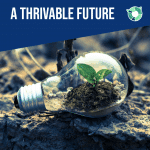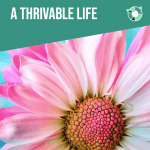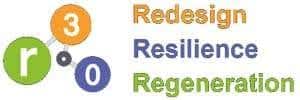It’s time for a sustainable catechism on creative consumerism. We live on a finite world. Let’s face it; even time is finite, whether viewing it as our own lives or in the cosmic sense (dependent on philosophy). THRIVE has these 12 marvellous strategies to reach the United Nations Sustainable Development Goals called the Foundational Focus Factors (FFFs). Finite Resources is one of them. This article is about how you, as an individual, can make the most meaningful impact on this planet by remaining mindful of the fact that our resources are limited.
What is Creative Consumerism?
When I first pitched this article, it was with the naïve skill of an eager baseball player. I’ve done a little research since first pitching and realised that I may have to aim at a tangent. The marvellous, not so well thought-out, idea that I had was to exhort my wonderful views on how you could be creative with what you no longer use. Alternatively, I also thought about clever ways someone could go about their shopping habits. Alas, neither of these will suffice for the purpose I want to put forward.
“Creative consumerism” is two paradoxical words, according to an article I read on Medium. Creation is the act of making. Conversely, consuming is the act of destroying. They don’t go together. However, it is vital that we learn to integrate these two principles into our everyday lives if we are to conserve our ever-dwindling resources. Our lives are built on consuming. It’s what we do as humans. We buy, we use, we eat, and we discard. Indeed, as human beings, it’s all a necessity. To live, we must eat. How do we get around this?
We get around this by getting creative and engaging in what I term “creative consumerism”.
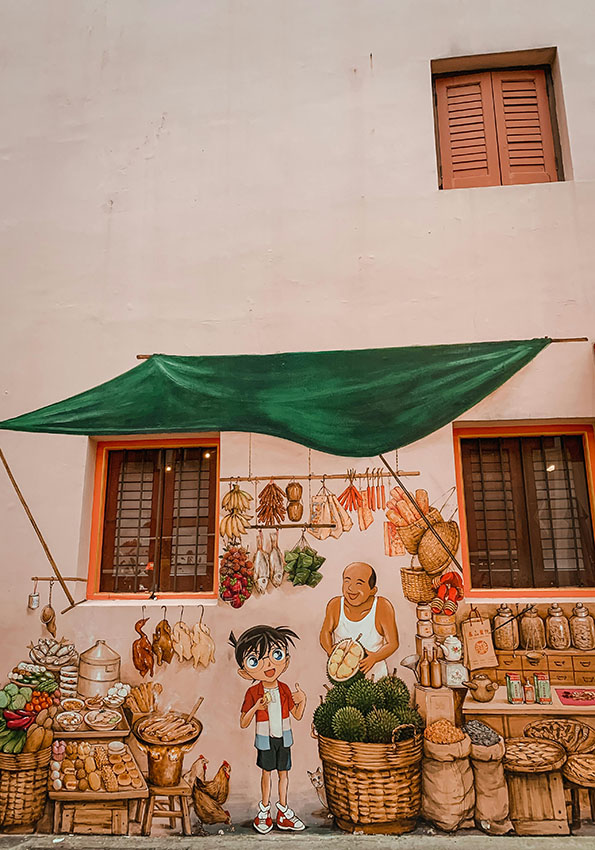
A child shopping.
Source: Pexels.
How Do We Do Creative Consumerism?
You often hear motivational gurus prattle on about things being “all in the mind”. Normally this is aimed at such hoodoo woo-woo called the “Law of Attraction” or manifesting things. I’ve tried this stuff. It doesn’t work. Manifesting or attracting new finite resources is not going to work. Sorry to burst bubbles here, but that’s the facts.
However, these gurus do have something right about things being “all in the mind”. Creative consumerism is not something for which I can give you guidelines or a wikiHow to make it happen in your life. But I can give you the strategy to achieve creative consumerism. This strategy is called systems thinking.
Systems thinking, of course, is all in the mind because it is about thinking, rather than doing. Nevertheless, a psychologist will tell you, “Thoughts affect emotions that create actions.” Now, systems thinking is big-picture thinking. It is about thinking beyond your boundary as an individual entity and moving your vision to take in the scope of as much as your mind can possibly handle. After a while, your mind will get the hang of this new way of thinking, and you will be able to move beyond your family, neighbourhood, society, shire or council, state, and nation until you can see the whole globe and how everything interconnects. I’d love to tell you, but it’s best for you to experience it first-hand. It is terrifying and humbling. Systems thinking will inform your emotions, which will change your actions, to consume creatively.
I’d like to share a fictional example on creative consumerism.
Charlene: The Creative Consumer-woman
Chapter 1
Once upon a time, there was a little old, grey-haired, toothless lady, Charlene, who lived at the end of a street in the middle of nowhere. She kept to herself as she didn’t have a job or family. Because she was old and had some unusual ideas, like picking up neighbourhood rubbish and lawn clippings; people avoided her. She walked to the shops to buy the groceries she needed, which were the things she couldn’t grow in her lush backyard. Charlene never complained, not once. She was very happy.
Conversely:
Up and down the street were the fancy houses and homes of families, both young and old. Every day, the parents of these families would go to work, driving their cars, pouring CO2 into the atmosphere like it was nobody’s business. When the children would get old enough, they also bought cars and went to work. Every evening, for meals, everyone in the neighbourhood bought fast food, sometimes collecting it themselves and other times having it delivered. However, all was not bright and beautiful for these affluent families. The families complained bitterly that they worked so hard and never had enough money.
Chapter 2
One day, the mother of one of the families which earned a higher income than most, and thus contributed more to pollution and had less money to spend, saw Charlene out in her front garden rummaging around in a bin full of what seemed to be food scraps.
“Charlene,” the mother asked. “How do you do it? You don’t have a job? You never eat out? We rarely see you driving? But you thrive whereas we don’t.”
Charlene stood up, pulled her garden glove off, and swiped her forehead with a dusty hand. “I’ll share a secret with you, young lady. I used to be like you. I had it all, debts, a car, and a house. Every night, I used to eat out. Then, I had a moment, what one might call a light bulb moment, where illumination flashed into my head, and I realised I had it all back to front. People like you live to eat. You conduct your lives around consuming. Now, we have to consume to live. However, I prefer to eat to live.”
Chapter 3
The mother threw up her hands, frustrated with Charlene’s cryptic answer. “I still don’t understand you!”
“You see this bag of muck? It’s called compost. It’s my food waste from what I don’t eat. I also use dead plants, leaves, and clippings. Ain’t you ever noticed how I clean up everyone’s yard?”
The mother nodded her head. “Yes. We notice. Indeed, we think it’s very strange.”
Charlene grinned. “Right. Well, I use this compost to nourish the seeds I get from the vegetables I eat. In the beginning, I had to buy all my seeds. As I evolved, I learned various ways of doing this, so I could have my own fruits, vegetables, and herb garden. Now, I only buy what I can’t grow from the shops. I had to learn a strategy called creative consumerism. Once you understand what the goal is, you can do the research to develop your own tactics that you use in your own life. See?”
The mother nodded her head again, this time with more confidence.
“And that, young lady, is how I do it, part of it, anyway. The rest is for you to find out on your own journey.”
*Charlene: The Creative Consumer-woman is a work of fiction, including characters, circumstances, and location.
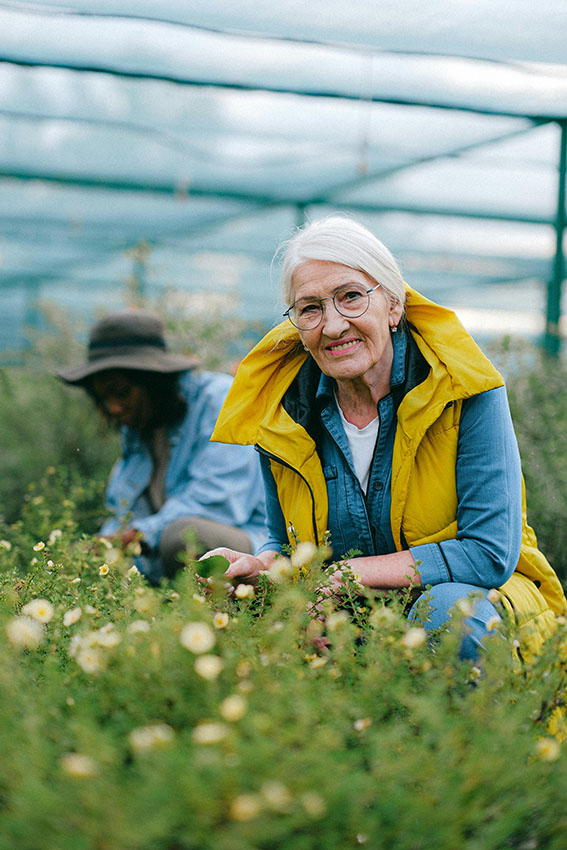
An elderly lady tending a garden.
Source: Pexels.
A Non-Fiction Example Of Creative Consumerism
It seems to me that one fictional example might not be enough. So let me share with you something my parents did when I was a teenager, still living at home. My father was handy around the house. Using methods, which I did not pay attention to, he managed to divert all the wastewater in the house, and I mean all, to water the garden. In fact, he did this so well that in the 1990s the water bill for the year was well beneath $20. Furthermore, we had a beautiful garden, as the plants were not designed around European plants but those native to the Australian environment. This is another example of systems thinking and creative consumerism. My parents knew nothing about the looming environmental crisis, but they understood they had to live within certain boundaries as a family entity.
moving forward
In conclusion, this article has not given you any concrete ideas on how you can participate in creative consumerism. Really, what good will it do for me to give you the tactics on how to live your life? It won’t do either of us good. I don’t know your situation. Each entity’s situation, whether individual, family, or community, is different. However, our boundaries remain the same. We have a social floor to live above, meaning we have minimum requirements for our continued existence. Furthermore, we have an environmental ceiling, meaning there is only so much we can take before environmental collapse.
What I have done is I’ve given you some strategies and a new way of looking at the world so that you can participate in this lovely experience called creative consumerism. Systems thinking will allow you to pick your goals, focus on a strategy, and develop the tactics that will work for you. You will be able to do all this while understanding your impact. At the end of the article, I will share some of these Foundational Focus Factors (FFFs) with you that we’ve covered. With your new vision, you will be able to see a way out of our many crises and how you are now empowered to take action.
Why is it essential that we focus on Creative Consumerism?
We have one planet among over eight billion of us. Let me use the example of a pizza. There is one pizza. If there is one person, there is plenty of pizza. If there are eight billion people, a lot of people are going to miss out on pizza. Now, it’s okay to think that you won’t be the person to miss out, but what if you are? Wouldn’t you want someone to think of you? Well, if you want someone to think of you, perhaps you should think of someone else. It’s either a win-win or no one wins. We are down to the line, and this is how it is.
Of course, we aren’t talking about a pizza but a planet. A planet is a lot bigger than a pizza, but they have a couple of things in common. One, they are both round; though, technically the Earth is spherical. Two, they are both finite. This is why it is essential to engage in creative consumerism. We will have what we need and so will other people and the future generations of planet Earth. Creative consumerism will reduce the environmental damage you do and the carbon footprint you leave. Furthermore, it will leave you with more financial resources in your wallet. How does that sound?
achieving the United Nations Sustainable Development Goals (SDGs) and how they link to Creative Consumerism
The following is a quote from the UN.
“The 2030 Agenda for Sustainable Development, adopted by all United Nations Member States in 2015, provides a shared blueprint for peace and prosperity for people and the planet, now and into the future. At its heart are the 17 Sustainable Development Goals (SDGs), which are an urgent call for action by all countries – developed and developing – in a global partnership. They recognize that ending poverty and other deprivations must go hand-in-hand with strategies that improve health and education, reduce inequality, and spur economic growth – all while tackling climate change and working to preserve our oceans and forests.
The SDGs build on decades of work by countries and the UN, including the UN Department of Economic and Social Affairs.”
United Nations
The main focus of creative consumerism is SDG12 which is “Responsible Consumption and Production“. It’s easy to see between the stories how creative consumerism is a key part of achieving this goal. However, there are a few other goals that this subject ties into.
Creative consumerism takes steps on the individual level to tackle SDG13, “Climate Action“. This is done via a more mindful and thoughtful way of purchasing and consuming. Instead of the short-term view for immediate gratification, using systems thinking, creative consumerism empowers the user of this strategy to understand and mitigate their impact on the climate.
Furthermore, creative consumerism positively affects SDG15, “Life on Land“. By practising Creative Consumerism, animals have less pollution to deal with and more land for natural habitats. So, although creative consumerism doesn’t directly play into this SDG, indirectly it’s connected to it.
A Thrivable Framework

The THRIVE logo – a ciambella chart.
Source: Logos.
Welcome to the THRIVE Framework. If the SDGs are the goals, the Framework is the path, the strategy, to which team humanity can score points for the future. The THRIVE Framework, otherwise known as the “Systemic Holistic Model“, is made up of 12 Foundational Focus Factors (FFFs), of which I’ve already introduced you to a couple. Together, along with back-casting, this Framework works together to send humanity hurtling towards thrivabililty. Back-casting is setting up your goal and then working your way backwards to find the steps to achieve your outcomes.
THRIVE also offers businesses and people a tool they can use to calculate how sustainable they are. This is called the THRIVE Platform. If you want more information on how to access and use this, please contact us.
The THRIVE Framework’s original target audience was business entities. However, once you familiarise yourself with the FFFs, you will see that these principles can be used at the microcosmic and individual scale, also.
In this article, we touched on several FFFs. Finite Resources and Systems Thinking are the most obvious. However, we also explored FFFs such as Strong Sustainability, Regenerative Economy, Complex Wicked Problems, Values-Based Innovation, and Entity Model. Following is the brief rundown on these FFFs that I promised earlier. I always keep my word! Please feel free to explore the provided links to the pillar pages that discuss these FFFs in detail. A lot of time and work has gone into these by our dedicated volunteers.
Complex Wicked Problems
A complex, wicked problem refers to a social, cultural, political, or economic problem that is difficult to solve. The term “wicked” refers to the fact that many problems are hard to define, complicated, and defy conventional thinking or simple answers. Many complex wicked problems also become exacerbated by climate change. Often the solutions to one problem cause difficulties in other areas.
The situation in Charlene’s story of the other residents on the street represents a complex, wicked problem. Families are forced to work harder, so they can consume more. Furthermore, to get ahead and provide a home, they are required to go into debt, again, pushing them to work hard. They are so busy that they have no time to cook a meal or tend a garden. Of course, Charlene realised all this and came up with her own solution. During the transitory stage, however, Charlene still had to depend on old ways to make it through, until she had adjusted to her new way of living.
Entity Model
Entity model aim to navigate what entities can do. An entity can be anything from a small, single-celled organism to the entire cosmos. These models shape the boundaries that outline their limits. THRIVE’s logo, a ciambella chart, outlines two important boundaries for humanity to adhere to so that it can achieve thrivability. One is a social floor, denoting the minimum for an entity’s survival. The other is an environmental ceiling. This environmental ceiling is where the environment can no longer recover from the damage, which can deprive entities of what they need to survive.
In the story, Charlene, the families, and the entire community are entities. Furthermore, in my real-life example, my family represented an entity. Some entities, such as Charlene and my family, understood that there were boundaries necessary to live within. Other entities, such as the other families in Charlene’s story, don’t know how to live within the boundaries, causing them problems.
Finite Resources
Finite resources are resources consumed faster than their production. Some resources take only a few years to replenish, such as trees. Others take millions of years to form, such as coal and oil. Renewable resources are those that are renewed without delay, such as wind and solar.
Creative consumerism is about preserving our finite resources, along with living within our planetary boundaries to ensure that all of humanity has the opportunity to thrive. We have no choice but to consume to live. However, we do have the choice on how we do it. Furthermore, our choices involve if we do or don’t replenish what we take. If we do replenish, how do we do it? This is creative consumerism.
Regenerative Economy
Our current economy is a linear economy. Products get mined/farmed, created, sold, and disposed of. A regenerative economy focuses on regenerating the environment and using products in a circular fashion. The aims are to reuse, recycle, and repair. Sometimes the regenerative economy is known as the circular one. However, a regenerative economy also seeks to regenerate the environment through circular practices.
Both Charlene and my parents participated in creating a regenerative economy. In fact, Charlene planted seeds from her fruits and vegetables used in preparing food, and my parents used wastewater to nourish the yard. In this way, they acted directly with the environment, regenerating it.
Strong Sustainability
Strong sustainability ensures entities view natural resources as finite resources. Finite resources are unexchangeable for money. Strong sustainability, in contrast to weak sustainability, is not just about mitigating the worst impacts of climate change to ensure our survival. It is about allowing nature to regenerate, thus enabling ecosystems to bounce back and flourish. It also means recognising that if we want prosperity, it needs to fall within the boundaries of what is compatible with the earth’s ecosystems.
Charlene and my parents understood that resources are quite finite. Regardless of the fact you can use money to buy resources, money can’t replace the resources. We can print more money, or numbers can be adjusted in our bank account, but once our resources are gone, they are gone. We won’t be purchasing top-ups from passing alien astronauts peddling snake oil.
Systems Thinking
Our actions interconnect with each other and our environment. Systems thinking is a holistic way of viewing these interactions. What impacts one entity or system may affect another entity or system, either for better or worse. Entities must understand and consider their impacts, even the ones they don’t immediately see.
Creative consumerism isn’t about doing something someone told you to do. It’s about using systems thinking to create a sustainable life for yourself and understanding your impacts around you. This includes the impacts you may not immediately see. Humanity is all part of the problem, some more so than others. However, humanity is also part of the solution. Each of us can do small things, in little ways, on a regular basis, for long-lasting generational impacts.
Values-Based Innovation
Values-based innovation considers the values we hold dear. These values encompass aspects such as human life, thriving societies and ecosystems, fairness, social justice, and other initiatives aimed at creating a thrivable world. It is these values that drive the innovation process, shaping the development of solutions for many intricate and challenging issues facing us.
Part of the key to participating in creative consumerism will be innovating your tactics based on what you value. You will need to think long and hard on this. What do you value? Do you value your Netflix subscription, which allows you to switch off from individual and global issues? Or do you value your life and your planet? Using systems thinking, you will understand what you value and begin innovating based on these principles.
Creative Consumerism With THRIVE
THRIVE stands for The Holistic Regenerative Innovative Value Entity. That is our name, and that is our game. We aim to walk the talk, and we invite you to join us. We have nothing to sell, but we’d like to share with you our way of thinking so that our planet and species have the chance to go beyond surviving and actually thrive.
If you are interested in joining us, there are a variety of avenues you can take. One way of keeping us with us is via social media platforms, such as LinkedIn, X, Instagram, and Facebook. However, you could subscribe to our YouTube channel, listen to our podcasts, sign up to our newsletter, stay up to date with our blogs, attend our free webinars, or even join us as a volunteer to make an even bigger difference in this world.





